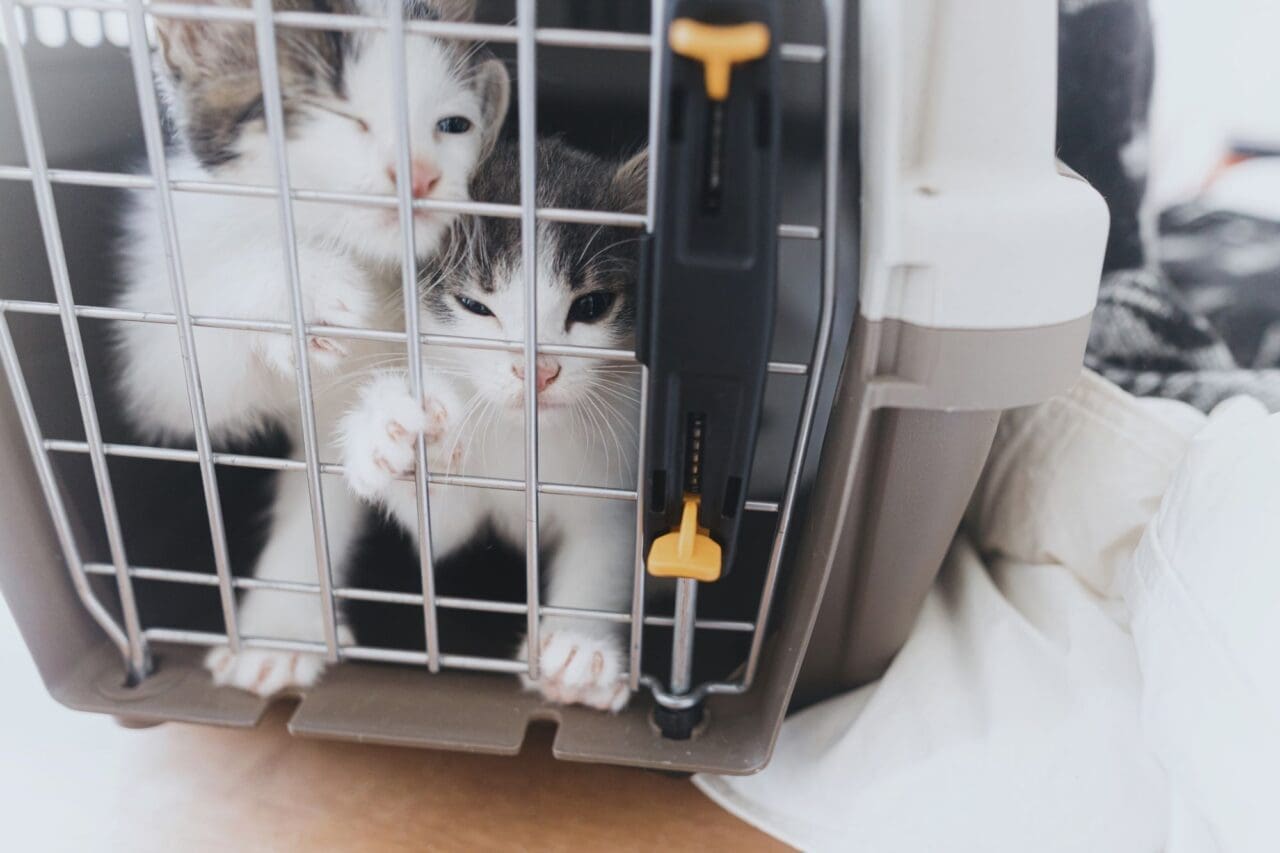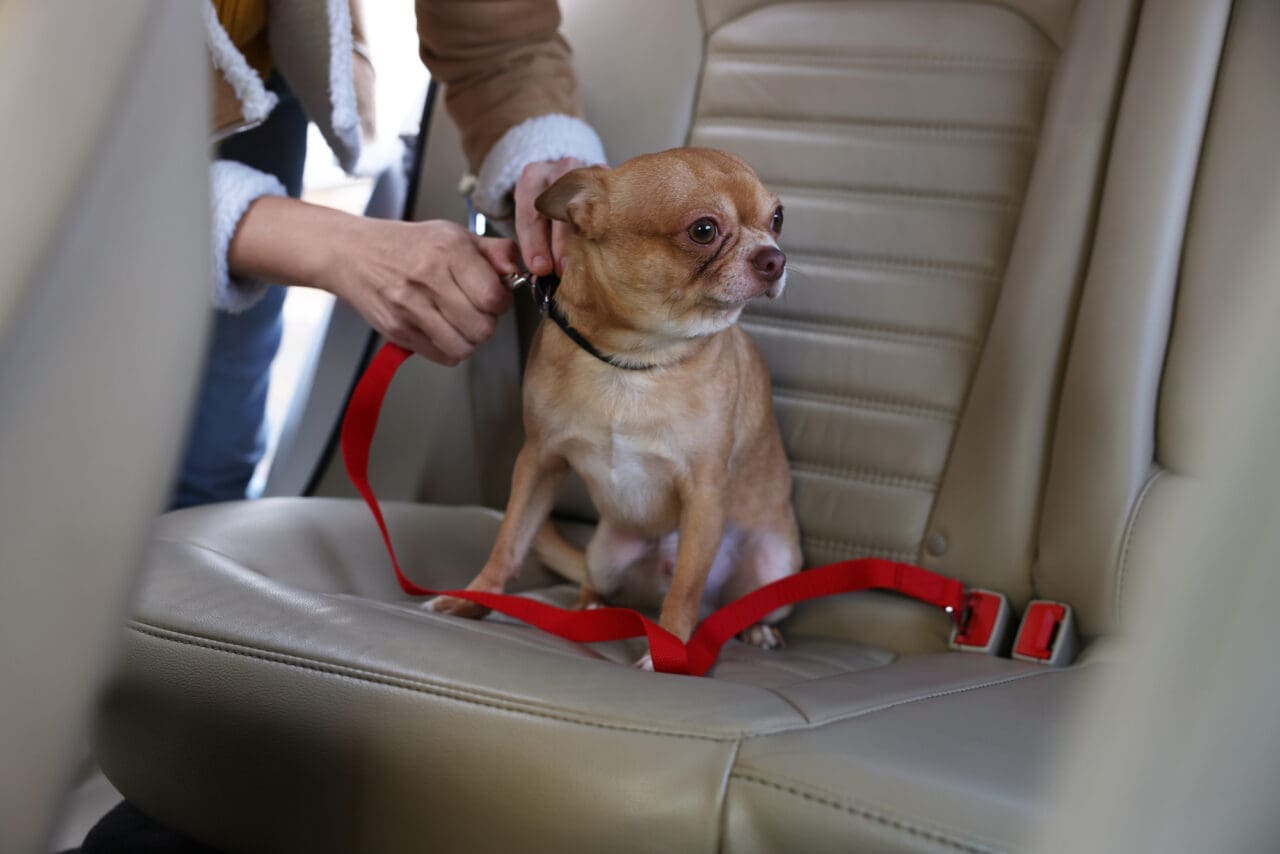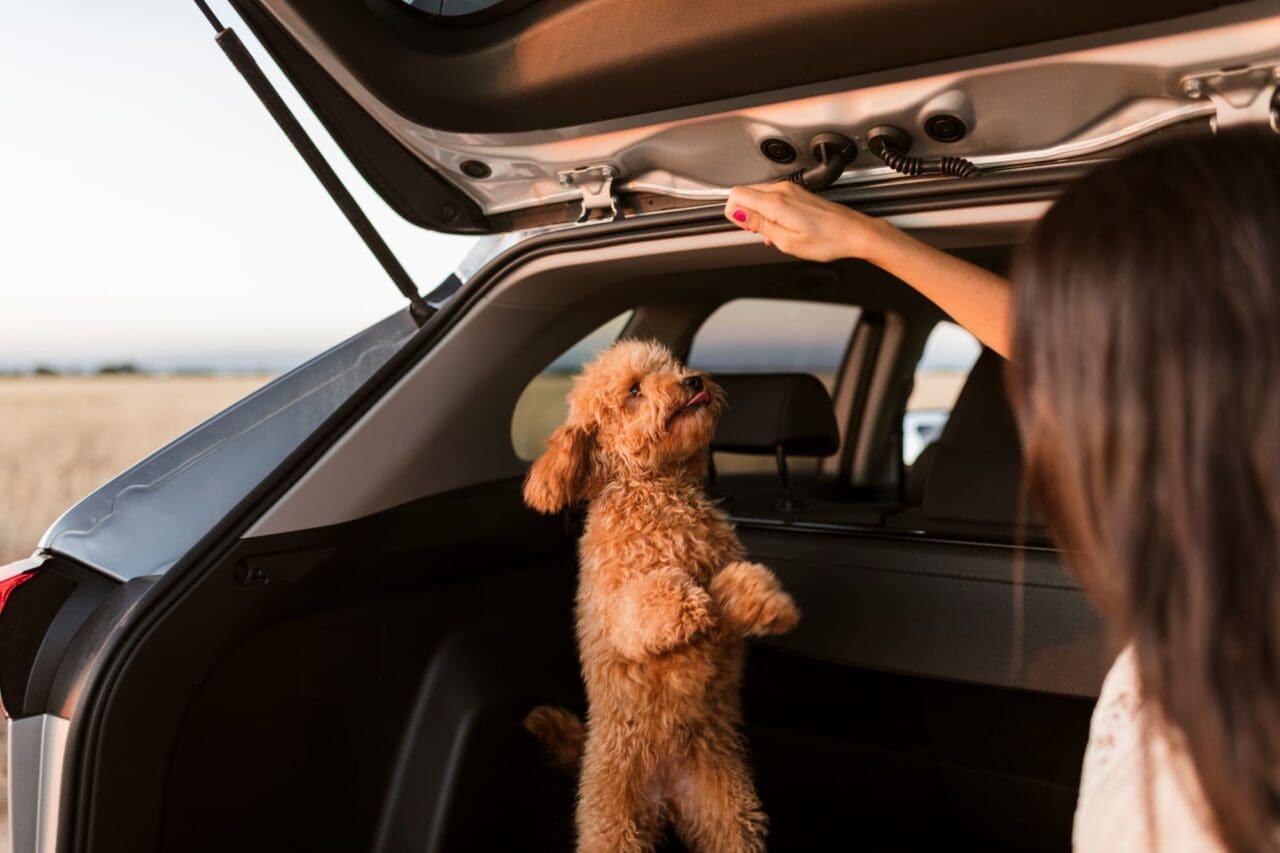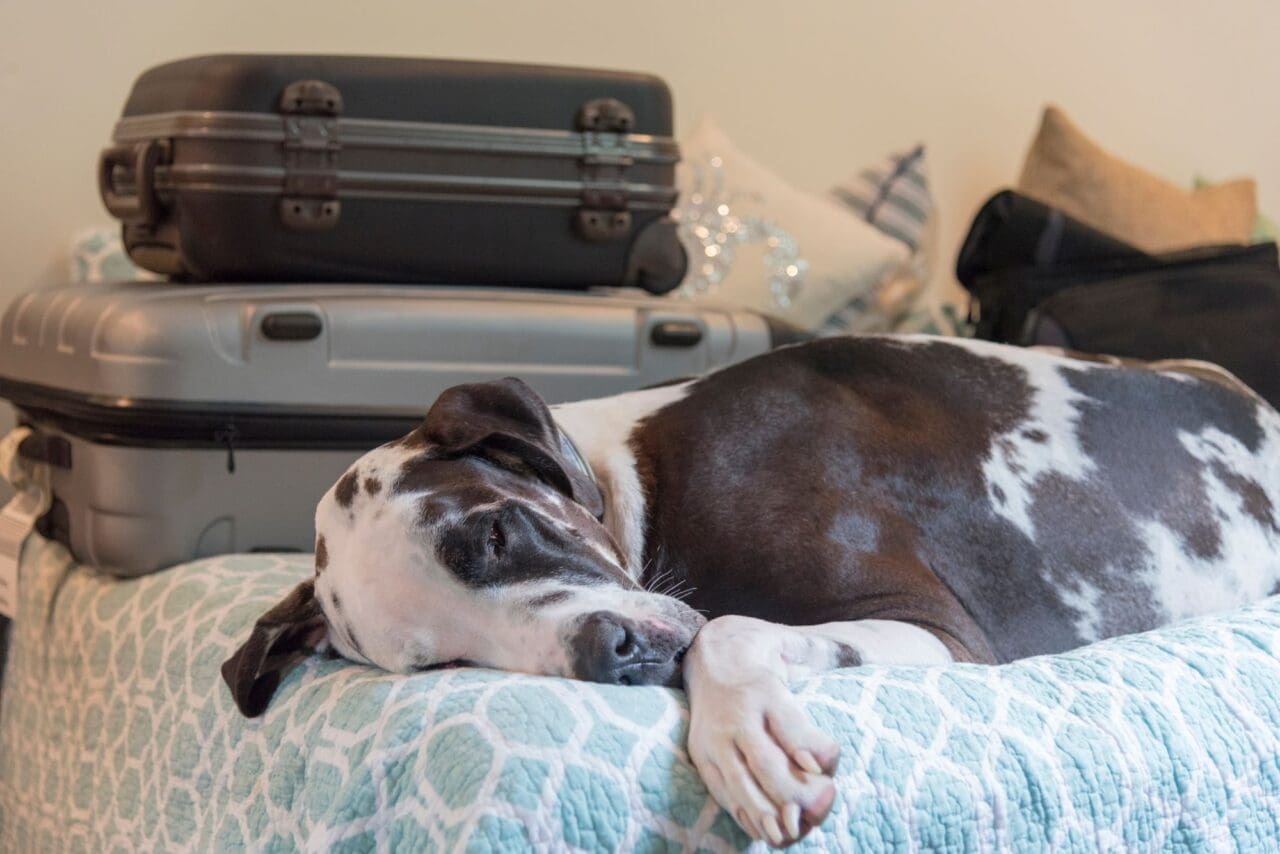Car Travel With Pets: 10 Tips for Safety and Security

Car travel with pets is one of the best adventures you can have. Their cute faces enjoying the gushing wind through the rolled-down window? Having them explore new spaces whenever you stop for rest? Not forgetting the company of having them there and knowing they are enjoying the experience.
That said, it’s important to consider their safety and security during the trip. So, what precautions and preparations should you make as you plan to travel with your pet? In this article, we take you through safety and security tips you must take to ensure a happy and safe trip.
Ready to take that road trip and include your beloved pet?
Don’t miss these related articles:
Traveling with Pets: Your Guide to Planning a Happy Trip
10 Pet Friendly Destinations: Where to Go with Your Furry Friend
Why Road Trips Should Be in Your 2024 Travel Itinerary

How to Prepare for Car Travel with Pets
When planning a car journey with a pet, safety and comfort are paramount. It is important to invest in the right carrier, prepare a comprehensive pet travel kit, and ensure your pet is healthy and ready for the trip.
Choosing the Right Pet Carrier
Selecting an appropriate pet carrier is crucial for your pet’s safety during a journey. The carrier should be:
- Size-appropriate: spacious enough for your pet to stand, turn around, and lie down.
- Well-ventilated: ensure ample airflow to keep your pet comfortable.
- Secure: a sturdy carrier will prevent escape or injury.
Materials: while there are numerous material options to choose from, it’s recommended that you opt for durable materials like hard plastic or metal.
Packing a Pet Travel Kit
A well-prepared pet travel kit should include:
- Food and Water: Enough for the journey, plus a bit extra.
- Bowls: Portable and collapsible options save space.
- Medication: Any prescription meds your pet requires.
Don’t Forget the Toys
Are they really necessary? Absolutely! Bringing your pet’s toys along for the ride helps create a sense of familiarity. This is an excellent way to help reduce stress and anxiety for your pet.
Pet Health Check-up
Before embarking on a long car journey, a pet health check-up is as important to ensure:
- Vaccinations are up-to-date: prevent diseases while traveling.
- General health is assessed: a vet can identify and address issues.
- Medications are prescribed if necessary: for motion sickness or anxiety.
Pro tip:
It’s important to take the time and ensure that your pet’s identification is current. Secondly, verify microchip information and tags to ensure all the details are correct and up-to-date, too.

Safety Tips for Traveling with Pets by Car
Now that you are prepared for your trip, how do you ensure or increase safety for your pet? Here are a few tips to get you started:
Securing Your Pet During the Drive
It is crucial for the safety of the pet and passengers that pets are properly restrained during car travel. Seat belts designed for pets or sturdy carriers can prevent injury in case of sudden stops or accidents. Make sure the restraint system is:
- Appropriate for the pet’s size and weight
- Comfortably fits the pet
- Firmly anchored to the vehicle’s seat
Maintaining Temperature and Ventilation
A consistent vehicle interior temperature and good ventilation are important to prevent distress and health risks in pets. Always ensure:
- The car is well-ventilated with circulating air that is neither too hot nor too cold.
- The pet is never left alone in the vehicle, especially on warm or cold days, as temperatures can quickly become life-threatening.
Managing Pet Anxiety and Motion Sickness
Yes, pets can experience anxiety or motion sickness during car travel. Some of the preventative measures that you can use include:
- Acclimation: gradually getting the pet used to car rides.
- Comfort Items: bring familiar blankets or toys to soothe the pet.
- Medication: consult with a veterinarian about the use of anti-anxiety or anti-nausea medications if necessary.

On-the-Road Considerations for Pets
In addition to the above safety tips, here are a few tips to help you plan for a happy trip that takes your pet/s needs into consideration:
Planning Pet-Friendly Routes and Stops
Identifying pet-friendly rest stops, parks, and accommodations before embarking on a road trip can prevent last-minute hassles. A well-planned route includes:
- Regular rest stops every 2-3 hours to allow pets to exercise and relieve themselves.
- Pet-friendly accommodations, confirmed in advance, for overnight stays.
Feeding and Hydration on the Move
Maintaining a regular feeding schedule and ensuring pets are well-hydrated during car travel is essential for their well-being. Consider the following:
- Feed pets a light meal 3-4 hours before departure to prevent motion sickness.
- Hydration is critical. Offer water at every rest stop, and bring a spill-proof bowl for convenience.
| Meal Times | Item | Instructions |
| Pre-travel | Light meal | Give 3-4 hours before leaving |
| En route | Snacks | Offer during breaks; keep light |
| En route | Water | Provide at all rest stops |
Dealing with Unexpected Illness or Injury
Be prepared to handle health emergencies during the trip. Key measures include:
- Carrying a pet first aid kit with essentials such as bandages, antiseptics, and tweezers.
- Having the contact information for veterinarians along the route and near your destination.

Establishing a Routine and Ensuring Comfort
In car travel with pets, the key to a successful trip lies in providing comfort and familiarity. Here’s how you can do it before your car travel with pets comes along.
Creating a Familiar Environment in the Car
To prepare a vehicle for a pet-friendly journey, introduce vehicle-specific items, such as travel carriers or harnesses, well in advance. They can achieve this by allowing your pet to explore and spend time in the stationary vehicle over several days.
Consistency is crucial; consistently placing items like the pet’s favorite blanket, toys, and accessible water in the car can help associate the vehicle with positive experiences. A familiar scent often has a calming effect, so owners might consider using seat covers that smell like home or an item with the pet’s own scent.
Breaks and Exercise During Long Drives
Regular stops are essential for pets during long car trips. Owners should plan for a break every 2-3 hours to help prevent restlessness and discomfort. During these breaks, pets need an opportunity to stretch, eliminate waste, hydrate, and if safe, exercise in a controlled environment.
Ideally, they should maintain a similar level of physical activity as they would at home. Owners can use a leash or a pet harness to safely manage their pet’s activities outside the car.
A checklist for items to bring along might include:
- Leash or harness
- Portable water dish
- Waste bags
- Favorite toys
- Treats for positive reinforcement

Post-Travel Pet Care
After a journey by car, pets will require attentive care to ensure their comfort and health. Proper post-travel care can mitigate stress and help pets adjust to their environment effectively.
Monitoring Pet Behavior Post-Travel
Once travel is concluded, closely observe your pet for signs of stress or discomfort. Symptoms to watch for include:
- Restlessness: pacing or inability to settle may indicate stress.
- Change in appetite: a marked increase or decrease in eating can signal discomfort.
- Altered bathroom habits: monitor for any irregularities in frequency or consistency.
Promptly consult a veterinarian if any concerning behaviors persist or if your pet shows signs of illness.
Adjusting to New Surroundings
Now that you are at your destination, it’s important to help your pet adjust to the new environment. Here’s how you can do it:
- Familiar objects: place the pet’s favorite toys, bedding, and dishes in similar locations as in the previous setting.
- Consistent routine: maintain regular feeding, walking, and rest times to provide stability.
- Safe exploration: allow the pet to explore the new surroundings, ensuring areas are pet-proofed.
FAQ
What essentials should I pack for a dog during a road trip?
Pack food, water, bowls, a leash, waste bags, a first-aid kit, any medications, and a favorite toy or blanket to provide comfort and maintain routine.
How can I naturally calm my dog for car travel?
Natural calming methods include exercise before the trip, comfortable bedding, familiar items, and possibly pheromone sprays or calming treats if they prove effective for the dog.
What are the best practices for traveling with dogs on long car journeys?
Stop for regular breaks to allow the dog to use the restroom and exercise, keep the dog hydrated, and maintain a comfortable temperature in the vehicle.
What considerations should I take into account when traveling with large dogs in a vehicle?
Ensure ample space for the dog to sit or lie down comfortably, use crash-tested safety harnesses or secure crates, and do not allow the dog to ride with his head out the window.
How can I ensure the safety of my dog when traveling by car?
Use a well-ventilated crate or harness attached to the seatbelt, never leave the dog alone in a parked car, and always keep the dog’s identification tags up-to-date.
What options are there for sedating a dog for car travel?
Consult with a veterinarian before considering sedation as it can have risks; non-sedative calming aids or behavioral training may be safer alternatives for car travel.

